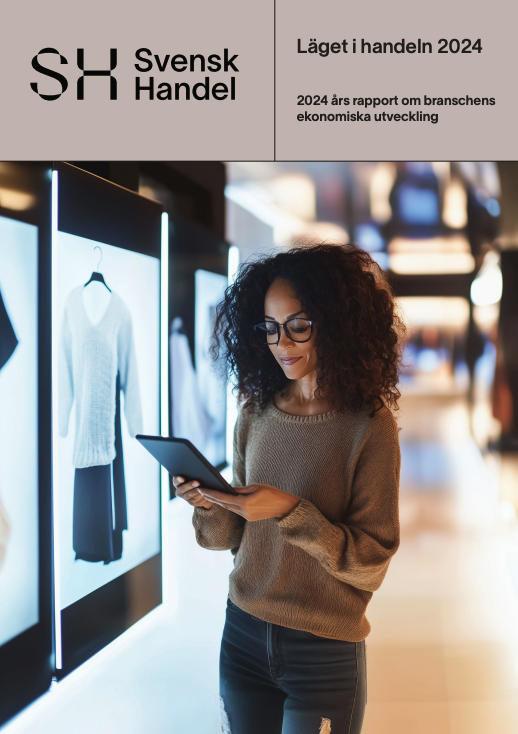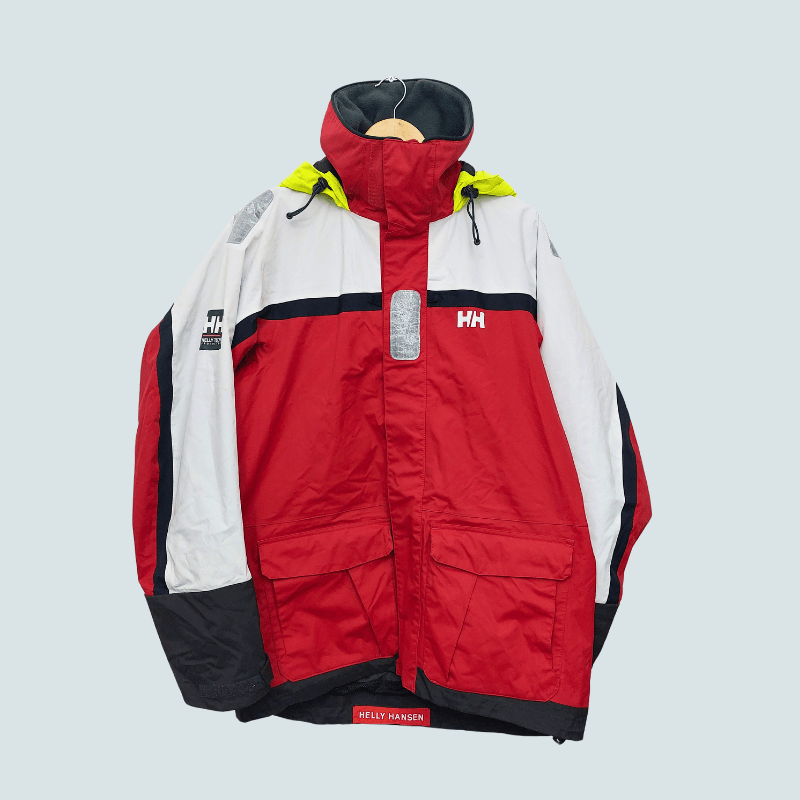Understanding the Growth of the Second Hand Market in Sweden
As 2024 passes us by one trend that continues to gain momentum is the growth of the Swedish second hand market, as it transforms and reshapes the retail landscape in Sweden.
If you look back over the last decade here in Sweden, the second hand market has experienced rapid growth at a rate significantly faster than the traditional retail sector, driven by a growing sustainability mindset, economic factors that have reduced consumers disposable income and the entrance of new players into the segment such as online platforms that have opened up the market to a new, younger audience.
According to the latest report by Svensk Handel, “The State of Trade 2024” (read their press release on the report here) second hand sales are expected to surge, potentially reaching SEK 50 billion by 2034. Today, second hand sales accounts for three percent of the total market, by 2034, the figure is estimated to be as much as seven percent.



Looking back – 2024 A year of economic strain and consumer shifts
The Swedish economy faced a challenging 2023 – 2024, marked by inflation, high interest rates, and decreased household purchasing power. So, as a result consumers i.e. you and me, “tightened their belts” (English expression meaning spent less, other than on the essentials), and the second hand market has emerged as an affordable alternative to buying new, further accelerated by the Sweden’s commitment to sustainability and a reuse philosophy.
So, why the shift?
With household budgets shrinking, more Swedes turned to second hand shopping, not only as a cost-saving measure but also as a way to make eco-friendly choices. This trend, once considered niche, has now moved into the mainstream, particularly as younger generations embrace the idea of “pre-loved” goods and have adjusted their buying behaviour to reduce their carbon footprint by choosing to reuse second hand goods rather than buy newly produced ones.
There has over time been a marked change in attitude regarding buying second hand. There has been a certain stigma surrounding shopping for used clothes. This to some extent has been flipped, as a younger generation without the negative connotations of older generations have welcomed second hand with open arms. And as the numbers of new e-commerce entrants to the sector has increased, targeting the younger generation, their marketing communications and brand positioning have been successful in making second hand a “trendy” option.
These new digital platforms have also been at pains to develop a specialised offering in the sale of second hand, making it easier for sellers and buyers to connect on a platform where everybody has a common interest.
Different items arriving daily. New & Unused, and Second hand.
Buy Better Quality For Less
Explosive Growth in Second Hand Sales
The second hand market includes several different types of players who together contribute to the industry’s growth. From non-profit organisations (i.e. charity shops) and bricks-and-mortar stores to online platforms, websites and auctions – all play an important role in shaping how today we buy and sell second hand.
According to Svensk Handel’s projections, the second hand market is poised for explosive growth over the next decade. The report predicts an 11% annual growth rate, pushing total sales to SEK 50 billion by 2034.
Fashion is predicted to be the key driver of this second hand growth. In 2023, second-hand fashion accounted for 7% of the total fashion trade in Sweden. That number is projected to grow to 17% over the next ten years.

Second Hand Goes Mainstream
What was once considered a shopping activity not many would admit to, has now gained widespread acceptance. Second hand shopping has evolved from a niche habit to a fashionable and sustainable choice.
Swedish retail fashion companies have also been quick to spot the trend and have responded to this shift by integrating second hand options into their own business models. Traditional retail giants are embracing second hand initiatives, offering their own used products alongside new ones. Companies like H&M with the help of Sellpy have launched second-hand collections to cater to growing consumer demand for sustainable, affordable alternatives.
However, the shift presents challenges. The process of assessing, pricing, and selling used goods can be labour-intensive, making profitability difficult to achieve, especially for brick-and-mortar stores. Online platforms, which allow users to list, sell, and ship products themselves, have become a key player in solving this issue.
Top Second Hand Purchases
The second-hand market encompasses a wide variety of product categories. According to the Svensk Handel, “The State of Trade 2024” report, the top categories for second hand purchases in Sweden are:
- Fashion (49%)
- Furniture and home furnishings (35%)
- Books, magazines, etc. (28%)
- Children’s items and toys (22%)
- Home electronics (10%)
- Sports and leisure products (10%)
- Beauty and health products (9%)
Many of these categories overlap, as consumers often shop across multiple areas.



The Drivers of the Second Hand Boom
There are a number of forces behind the growing second hand market:
Sustainability
With environmental awareness at an all-time high, consumers are seeking ways to reduce their carbon footprint. Buying second hand is a way to extend the life cycle of products, decrease waste, and avoid the environmental impact of new production.
Economic Factors
The ongoing recession, coupled with inflation and rising interest rates, has made second hand shopping more attractive from a financial perspective. Households are looking for ways to cut costs, and purchasing second hand items often provides substantial savings compared to buying new.
Accessibility
In most cases, the quality of the material and manufacturing tend to go hand-in-hand with what would normally be the more expensive, premium brand items, those with the household brand names that are associated with both quality and desirability. So, these types of items when new for most of us are out of our budget, we like them but can’t afford them – with the advent of second hand, it means I can buy those brands I love because the previous owner has looked after them and decided to sell them on at a price I can now afford.
A Younger Audience
For younger shoppers, second-hand offers not just affordability, but also a way to express individual style. Many view it as an opportunity to find unique, one-of-a-kind items that stand out from the mass-produced goods available in traditional retail stores.
A younger audience is generally more open to new trends and buying behaviours, but probably the financial aspect is the most important; younger people often have a limited budget and are therefore looking for affordable alternatives.
Online Platforms
The rise of online platforms has opended up the second hand market. While traditional second hand stores like Myrorna and Stadsmissionen still play a crucial role, new digital platforms are rapidly gaining ground. One of the consequences of more people deciding to sell their unwanted items is that there are less quality items circulating in the traditional second hand stores as consumers sell rather than donate items.
Platforms like Blocket, Tradera, Plick, and Vinted have made second hand shopping more accessible than ever, especially for the younger generation. These platforms allow sellers to list products easily on sites with large numbers of website visitors, an audience accustomed to online shopping. On these platforms everything is done by the seller, from text, to pricing, to photos to shipping.
Who is fueling the Second Hand market?
According to the “The State of Trade” report, 39% of 18-29-year-olds make at least one second hand purchase per month, compared to 30% of 30-49-year-olds. The report also reveals that women are more likely to shop second hand than men, with 33% of women making monthly purchases, compared to 21% of men. People who have passed the 50 mark do not buy clothes on the second hand market to the same extent as the younger age groups.
Challenges and Opportunities in the Second Hand Market
While the second hand market is growing rapidly, profitability remains a challenge. Handling used goods requires significant resource and effort, from evaluating the condition of items to pricing and photographing them for sale, uploading them online, distribution, etc.
Online platforms, which rely on sellers to handle much of the work, have a greater chance of achieving profitability. For traditional retailers, offering second hand products can attract foot traffic and online visits, which may lead to sales of new products as well.
The Future of Second Hand: Circular Economy and Beyond
As consumers increasingly embrace the concept of a circular economy—where products are reused, recycled, and repurposed—the demand for second-hand goods is likely to grow. Even though the concept of sustainability has increasingly come into focus, the main driving force behind second hand purchases is that the price is lower.
As more Swedes discover the benefits of buying second-hand, the market will continue to evolve. So, for those who enjoy being outdoors, buying second hand clothes and equipment is more than just a practical choice; it’s a commitment to sustainability and leaves more money in your pocket.
So, next time you’re considering buying something new, consider the benefits of second hand. Your wallet and the planet will thank you.
Subscribe and get 10% off today.
Get the latest news, new product arrivals and discounts straight into your inbox.
Subscribe & Get A 10% Discount.
Don’t miss out on news, the latest new products and special time limited offers 🙂

